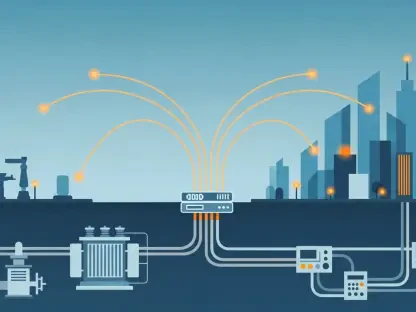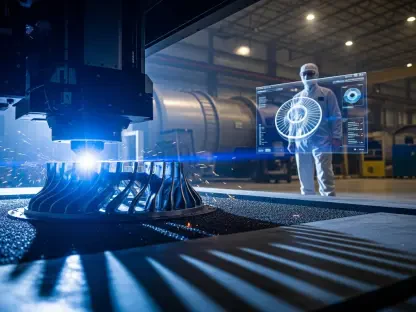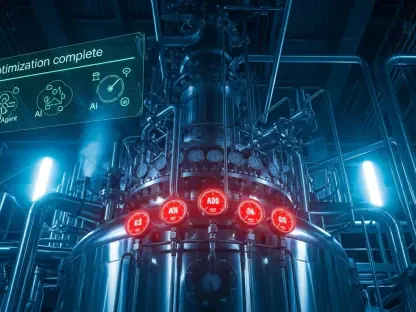As additive manufacturing becomes more industrialized, post-processing is gaining increasing importance. Heat treatment is a significant type of post-processing crucial for improving the properties of parts produced through powder bed 3D printing (PBP), which includes various metals. These treatments enhance parts by making them stronger, denser, and tailored with specific properties essential for end-use applications. For better comprehension, insights into two widely used heat treatment methods: hot isostatic pressing (HIP) and annealing can help in making informed decisions.
Overview and Importance of Post-Processing
In the realm of 3D printing, particularly metal additive manufacturing, post-processing is a critical step that cannot be overlooked. As the industry evolves, the need for robust and reliable parts has led to the adoption of various heat treatment processes. These processes are designed to enhance the mechanical properties, durability, and overall performance of 3D printed components.
Heat treatment processes like hot isostatic pressing (HIP) and annealing play a pivotal role in achieving the desired material characteristics. By understanding the nuances of these methods, manufacturers can make informed decisions that align with their specific requirements and application needs. As additive manufacturing technologies advance, post-processing becomes an even more crucial stage to ensure optimal part performance and longevity.
Working Mechanisms and Procedures
Annealing is a widely used heat treatment process that involves heating materials such as metals, glass, ceramics, or polymers to a specific temperature and then allowing them to cool slowly. This controlled cooling process helps remove internal stresses, making the material more ductile and less brittle. By systematically removing these internal stresses, annealing increases the material’s ability to resist deformation when subjected to external forces.
The annealing process can be broken down into three main stages: recovery, recrystallization, and grain growth. During the recovery stage, the material’s temperature rises above the crystallization point, allowing atoms to move and eliminate dislocations within the crystal structure. In the recrystallization stage, new strain-free grains form and replace the spaces left by previous dislocations. Finally, during the grain growth stage, new grains develop and grow in a controlled manner, contributing to a refined microstructure. These stages ensure that the material achieves the desired mechanical properties and structural integrity.
Hot isostatic pressing (HIP) is a process that involves placing parts in a high-pressure containment vessel and subjecting them to high temperatures and gas pressures. This method is particularly effective in eliminating porosity in metallic materials and increasing density, especially in ceramics. The HIP process operates at temperatures that can reach up to 2,000°C and pressures up to 45,000 psi (about 310 MPa). The cycle duration varies from 8-12 hours to several days, depending on the material and desired final properties. Argon gas is commonly used due to its inert nature, preventing chemical reactions during the process.
Material Compatibility
Annealing is compatible with a wide range of materials, including both amorphous and crystalline substances. It is particularly effective for metals such as refractory metals, alloys, and various types of steel, including stainless steel, bronze, aluminum, copper, and brass. Additionally, annealing is suitable for polymers commonly used in additive manufacturing, such as ABS, PLA, and PETG. The versatility of annealing makes it a popular choice for improving the machinability, ductility, and overall performance of different materials.
The compatibility of annealing with diverse materials allows manufacturers greater flexibility in tailoring specific properties to meet their application needs. By carefully controlling the annealing process, manufacturers can achieve specific material properties tailored to their application needs. This widespread applicability is essential for industries that require high-performance materials with precise characteristics.
Hot isostatic pressing is universally applicable to metals, including challenging ones like nickel superalloys and titanium alloys. This makes HIP suitable for most metal 3D printing processes, where achieving high density and defect-free parts is crucial. While HIP is less developed for polymers, a variation known as warm isostatic pressing (WIP) can be applied to certain polymers like nylon or HPP. This process, however, remains costly and complex. HIP is also compatible with ceramics, provided their specific properties are respected.
HIP’s versatility in handling various materials, particularly metals and ceramics, solidifies its importance in industries that demand superior mechanical properties and structural integrity. Manufacturers can leverage HIP to enhance the properties of their 3D printed components, ensuring that they meet stringent quality standards and performance criteria.
Benefits and Drawbacks
Both annealing and HIP offer significant benefits in terms of improving material properties. These processes enhance ductility, remove internal stresses, and contribute to a more uniform microstructure. Additionally, they can consolidate several manufacturing steps, leading to more efficient production workflows. Annealing improves machinability, prevents cracking, and can be precisely controlled to achieve desired physical properties. It also enhances electrical conductivity and magnetic properties, making it suitable for a wide range of applications.
HIP, on the other hand, increases material density and can repair defects by filling pores and voids. This results in superior strength and reliability, making HIP an indispensable process for critical applications in aerospace, medical, and other high-demand sectors. However, both processes have their drawbacks. The time required for both processes is substantial, often exceeding 24 hours (HIP can take several days). The high energy requirements translate to significant costs. Specialized equipment and skilled operators further add to the expense.
Both processes may also cause dimensional changes in the treated parts due to modifications in material microstructure. These dimensional changes need to be carefully managed to ensure the final components meet the required specifications. Balancing these factors can be challenging, but the benefits often outweigh the disadvantages, especially in high-precision industries where material integrity is paramount.
Application Sectors
As additive manufacturing becomes more industrialized, post-processing is gaining increasing importance. One critical type of post-processing is heat treatment, which is essential for enhancing the properties of parts produced through powder bed 3D printing (PBP). This process involves various metals and significantly improves the strength, density, and specific characteristics of these parts to meet end-use application requirements.
For instance, heat treatments can make parts stronger by reducing internal stresses that might have been introduced during the printing process. They can also make parts denser by closing up any microscopic pores, thus enhancing their overall mechanical properties. Tailoring these properties ensures that the final product performs optimally in its intended application, whether in aerospace, automotive, medical, or other industries.
To better understand the impact of heat treatments, it’s helpful to look at two widely used methods: hot isostatic pressing (HIP) and annealing. HIP involves applying high pressure and temperature uniformly to the part, which helps eliminate internal porosity and results in a denser, more robust part. On the other hand, annealing involves heating the part to a specific temperature and then cooling it slowly to remove internal stresses and improve its ductility and toughness.
By utilizing these heat treatment methods, manufacturers can produce parts that are not only more reliable but also more tailored to specific performance needs. Therefore, understanding and employing appropriate heat treatments can play a crucial role in the industrialization and success of additive manufacturing.









